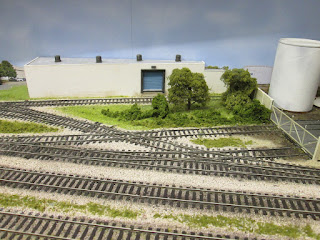At one time, there were over
5,700 wooden elevators in Canada's prairie provinces.
Called prairie giants or
sentinels on the prairies, they handled the grain that helped make Manitoba,
Saskatchewan and Alberta a bread basket for the world.
And not only that; the
elevators were the social hubs for the area’s farmers, a place to not only take a load
of grain, but also to grab a cup of coffee and catch up on the local news.
For residents of those town, the loss of the elevator was more than just economics—it was a real punch in the gut.
For residents of those town, the loss of the elevator was more than just economics—it was a real punch in the gut.
It said the town was dying,
or soon would be.
Or, as one person said to me:
“First it’s the elevator, then the post office, then the school, then the
churches. Then what’s left?”
Those classic old elevators
have mostly been replaced by modern concrete throughput elevators—giant facilities
that can handle large strings of hopper cars and hold many more bushels of
grain.
Today there are only 500-600 left, by one estimation, and only half of those are in
operation.
The most recent one to be
destroyed was at Meadows, just to the west of Winnipeg on the CPR mainline.
For Canadian Railway Modeller
Morgan Turney, its destruction is yet another sign of changing times. He wrote to
following ode to the Meadows elevator.
Remembering Meadows
I don't know what it is about the name 'Meadows;’ perhaps it conjures up memories of a very peaceful place.
There isn't much there. A few
farms nearby and a homestead just across the street from the Meadows road
sign.
But it had a Paterson wooden
grain elevator, the first one you came across driving westward down
Rosser Road.
Rounding a gentle curve just past Rosser, there were two things you could count on seeing. One was an African-type tree (it looks like it's from the plains of the Serengeti) in the field on the right hand side of the road.
Rounding a gentle curve just past Rosser, there were two things you could count on seeing. One was an African-type tree (it looks like it's from the plains of the Serengeti) in the field on the right hand side of the road.
And in the distance straight
ahead, the Meadows elevator.
It served as a
familiar landmark to anyone taking the back roads and following the
CPR's Carberry subdivision on a railfan adventure toward Portage la
Prairie.
Sadly after July 20, 2017,
that 'African' tree is all that's left.
Many of us will miss the Meadows elevator. It was the last one standing on that route after Marquette (another Paterson elevator) was pulled down on September 3rd, 2013.
Many of us will miss the Meadows elevator. It was the last one standing on that route after Marquette (another Paterson elevator) was pulled down on September 3rd, 2013.
How sad is it that we destroy
our iconic history so willfully. So thoughtlessly.
Meadows is gone—forever. All
that's left are the photographs.
And the memories.
Photos: Morgan Turney.
































